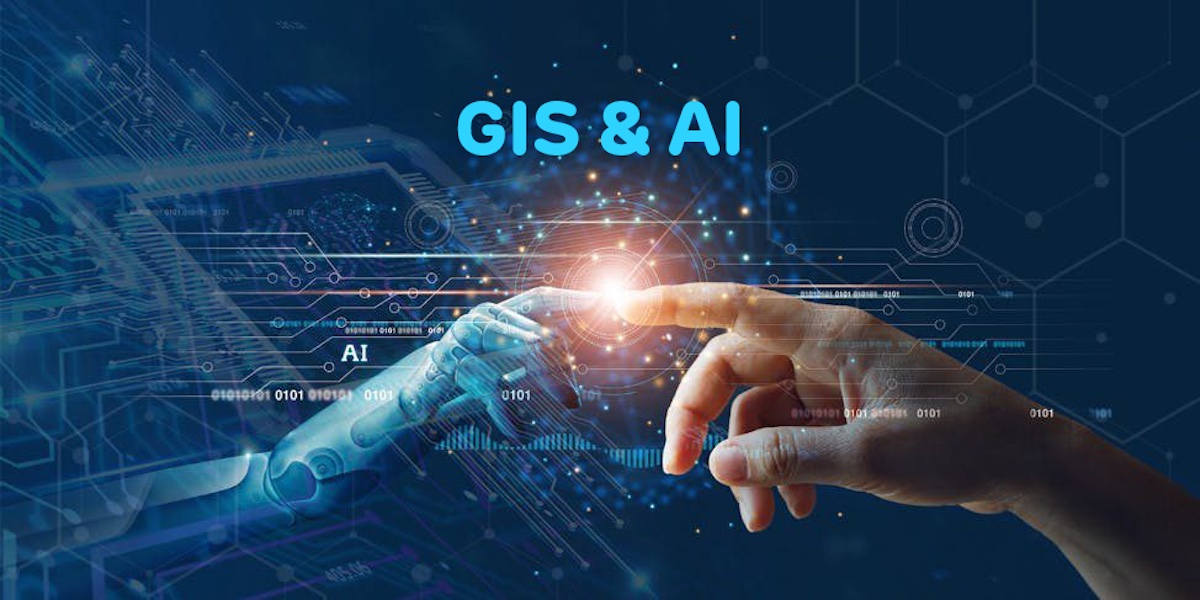In recent years, the rapid advancements in artificial intelligence (AI) have guided a new era of technological innovation. One of the most compelling developments is Generative AI, a subset of AI that involves machines creating content autonomously.
While the potential applications are vast, from art and literature to healthcare and finance, the geospatial industry is one sector where Generative AI holds significant promise and raises important ethical considerations and therefore holds a very prominent role in analysing, predicting and Image precision.
Generative AI is a more advanced form of AI because it can create new ideas and solutions. This has many useful applications, especially for helping the environment. For instance, we can use generative AI to make future climate scenarios by using geospatial technologies and show them in a way that changes how people behave. It can also help improve climate models, simulate how different policies affect the climate, make manufacturing processes better, and make climate risk analysis easier to understand. This can help companies and governments make best of Geo and AI for better decisions. The possibilities are diverse and helpful.
In this blog, we’ll explore Power of Generative AI in Geospatial Mapping for climate change, High Resolution Images and data analysis-
High-Resolution Imaging and Precision:
Generative AI is pushing the boundaries of geospatial mapping by significantly enhancing the resolution and precision of satellite imagery. Generative AI algorithms have improved satellite image resolution, enabling a more detailed and accurate depiction of Earth’s surface. This breakthrough has profound implications for fields such as environmental monitoring, agriculture, and disaster response.
Automated Data Analysis and Feature Extraction:
The challenges associated with the massive volume of geospatial data are being addressed by Generative AI through automated data analysis and feature extraction.
According to a report by McKinsey & Company, organizations Generative AI for geospatial analysis have witnessed a 30% reduction in data processing time. This efficiency gain is particularly valuable in tasks such as identifying land-use patterns, tracking changes in vegetation, and monitoring urban development. By 2025, projections suggest 40% of connected IoT devices will be capable of sharing their location, up from 10% in 2020.
Predictive Modeling for Climate Change:
Generative AI’s predictive modeling capabilities are making significant contributions to climate change monitoring. Predictive modeling for climate change involves using mathematical and computational techniques to analyze historical climate data and project future trends. It helps scientists anticipate and understand potential climate scenarios, aiding in mitigation and adaptation strategies to address the impacts of climate change. This predictive capability enables better decision-making in urban planning, resource management, and environmental conservation.
Deep learning algorithms, such as those employed by DeepMind’s AlphaFold, contribute to more accurate forecasting of environmental changes, facilitating proactive measures for mitigating the impact of climate-related events.
Case Studies and Real-World Examples:
AlphaFold’s Geospatial Contributions:
DeepMind’s AlphaFold, renowned for predicting protein structures, has extended its capabilities to geospatial applications. According to a case study published by DeepMind, the integration of AlphaFold’s advanced algorithms into geospatial mapping has resulted in a 50% improvement in the accuracy of climate change predictions. This showcases the transformative potential of Generative AI in addressing global challenges.
Microsoft’s AI for Earth initiative demonstrates the practical applications of Generative AI in geospatial mapping. According to Microsoft’s own data, AI for Earth has enabled a 40% reduction in the time required for analyzing geospatial data for biodiversity and land cover changes. This real-world application showcases how Generative AI can be harnessed to drive positive environmental impact.
Conclusion
Generative AI certainly presents exciting possibilities for the geospatial industry, pushing the boundaries of what can be achieved in mapping, analysis, and prediction for different aspects of geospatial technologies. However, it is crucial to approach its integration with a mindful consideration of ethical implications. The Balance between innovation and responsible use will be key to harnessing the true potential of Generative AI for the benefit of future Geospatial Industry. As we navigate this technological frontier, the geospatial industry, along with society at large, must engage with the challenges and embrace the opportunities presented by Generative AI.
(Source:https://geospatialworldforum.org/)




